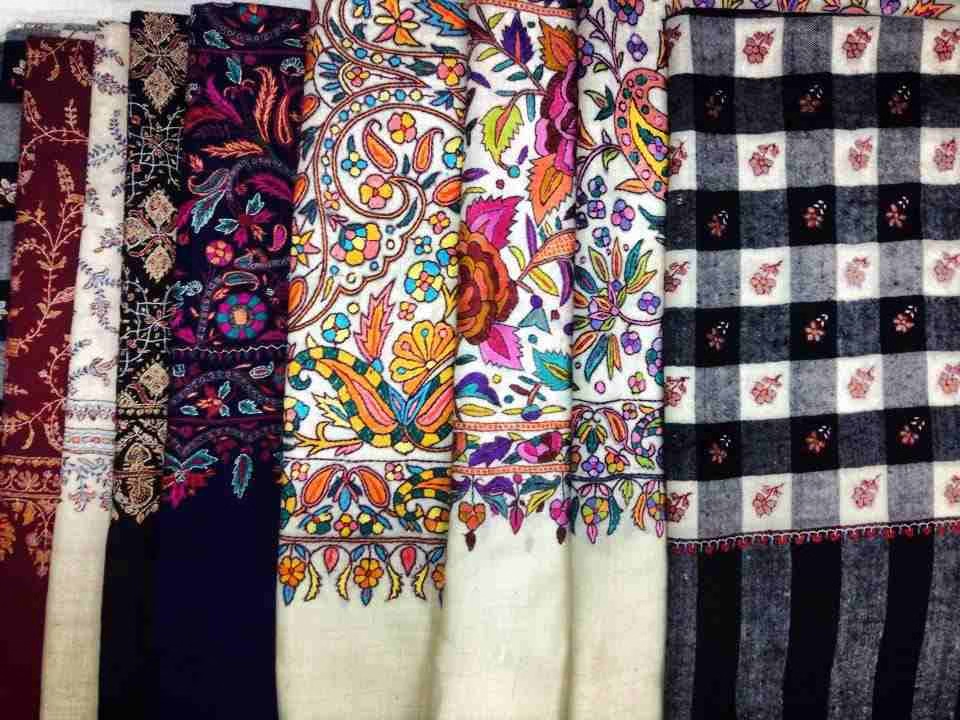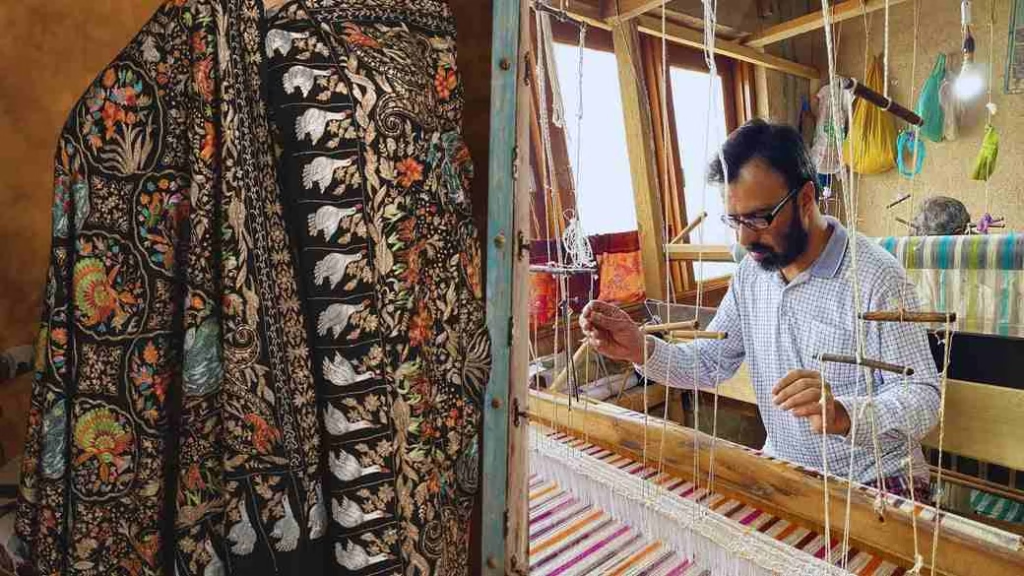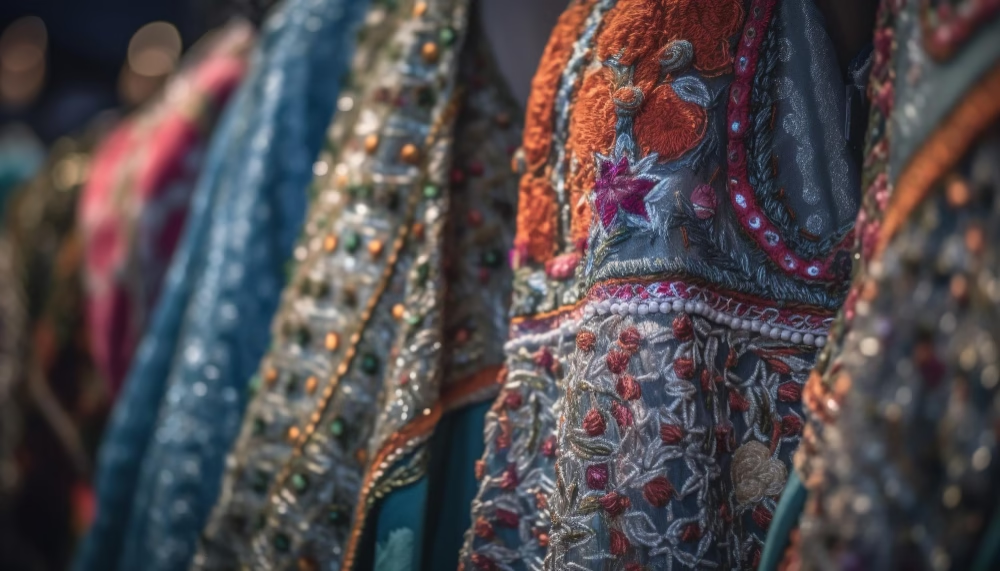Welcome to the fascinating world of Pashmina Craft, where tradition and luxury blend together with every thread. Nicknamed the “Soft Gold” of the Himalayas, Pashmina is more than mere fabric-it is a masterpiece of weaving nature’s finest fibers into it.
The craft starts way up in the mountains, where the soft undercoat of the Himalayan goat is gently plucked from their bodies. From this precious material, the finest artisans turn this treasure into delicate shawls, scarves, and wraps that speak elegance and warmth.
Each piece tells the story of tradition, craftsmanship, and heritage and is passed through generations. All this from spinning by hand through meticulous weaving up to a sophisticated process of fashion that ensures uncompromising quality.
You will discover how truly beautiful handmade luxury based on sustainability can be as you peruse and explore Pashmina Craft.
Join us on this journey and experience the timeless appeal of this cherished art form, cherished by royalty and fashion connoisseurs alike.
The Timeless Allure of Pashmina
Pashmina- the “soft gold” of the textile world goes back over 600 years. They originate from India, Nepal, and Tibet, which are areas of the Himalayas. The name Pashmina came from “pashm, the Persian for “soft wool.” They fabricate this delicate material from Changthangi goat’s fine undercoat. Those goats inhabit heights above 14,000 in Ladakh, and their wool is only 12–16 micrometers wide, which makes Pashmina very soft and light.

Production still relies on traditional techniques, involving 200 hours of careful hand-spun, hand-woven, and hand-dyed effort to create a single Pashmina shawl. The end result is uniquely soft and resilient. Many of the pieces have been lavishly decorated with intricate embroidery in the form of kani or sozni work.
Statistics reflect the exclusivity of Pashmina: the annual global production of Pashmina wool is only around 50 metric tons, while regular wool production exceeds 1.2 million metric tons. Its rarity, combined with craftsmanship, elevates its value.
Pashmina’s cultural significance goes deep, holding status and sophistication across generations. Once a piece reserved for royalty, nowadays, it adorns the wardrobes of celebrities and style icons all around the world. According to 2022, the global market for Pashmina was roughly $1.3 billion, with its popularity remaining very high.
Its timeless designs, unparalleled softness, and sustainable nature make Pashmina a true symbol of luxury and heritage. Owning a Pashmina is not just acquiring a product but embracing a legacy.
Types of Pashmina Craft: A Guide to the Finest Luxury

Well readers, as now we know Pashmina craft, known for its elegance and timeless beauty, represents the pinnacle of luxury textiles. Now it’s time to explore some popular types of Pashmina and shedding light on their unique attributes and the artistry behind them.
1. Plain Pashmina Shawls
These are the most classic form of Pashmina, showcasing the fabric’s natural beauty without any embellishments.
- Features: Smooth texture, lightweight, and unmatched warmth.
- Popular Use: Everyday luxury and versatile styling.
- Statistic: Approximately 40% of global Pashmina production is focused on plain shawls, highlighting their popularity.
2. Embroidered Pashmina
Embroidered Pashmina shawls are adorned with intricate hand-stitched designs, showcasing the artisans’ skills.
- Styles:
- Sozni Embroidery: Features fine, needlework floral patterns.
- Kani Work: Known for vibrant, tapestry-like motifs.
- Time Investment: A single embroidered shawl can take up to 240 hours to complete.
- Market Share: Embroidered Pashminas constitute about 25% of the craft’s annual sales.
3. Cashmere Pashmina Wraps
These versatile wraps combine the softness of cashmere with the craftsmanship of Pashmina.
- Characteristics: Perfect blend of luxury and functionality, often worn in cooler climates.
- Global Demand: Cashmere Pashmina wraps have witnessed a 15% growth in exports annually over the last decade.
4. Reversible Pashmina Shawls
A unique innovation in Pashmina craft, reversible shawls are woven to display different colors or patterns on each side.
- Highlights:
- Dual-sided use, offering two styles in one piece.
- Ideal for fashion-forward individuals.
- Fact: These shawls represent a growing niche, capturing 10% of luxury shawl sales globally.
5. Printed Pashmina Shawls
Printed Pashmina shawls offer a modern twist to the traditional craft, appealing to younger audiences.
- Techniques Used:
- Digital printing for contemporary patterns.
- Block printing for a handcrafted feel.
- Trends: Digital printed shawls have increased by 20% in popularity among millennials.
6. Pashmina Stoles and Scarves
Compact yet elegant, these smaller Pashmina creations cater to diverse preferences.
- Attributes:
- Perfect for everyday use.
- Available in bold colors and minimalistic designs.
- Demand: Pashmina stoles account for 30% of retail sales in urban markets.
7. Antique Pashmina Shawls
These rare pieces, often passed down generations, are prized for their historical value and intricate craftsmanship.
- Examples:
- Jamawar Shawls: Renowned for their elaborate paisley motifs.
- Vintage Kani Shawls: A collector’s delight, often auctioned at high prices.
- Investment Value: Antique Pashmina shawls can fetch prices exceeding $10,000 in global markets.
The Value of Pashmina Craft in Numbers
- Global Market Size: The Pashmina industry is valued at approximately USD 144.77 million and is projected to reach USD 296 million by 2032, growing at a compound annual growth rate (CAGR) of 5.8% during the forecast period.
- Artisan Contribution: Over 50,000 artisans in India alone depend on Pashmina craft for their livelihood.
- Export Volume: India exports 70% of its Pashmina products, with the US and Europe being key markets.
The types of Pashmina craft reflect the perfect harmony of nature and human artistry. Whether it’s a plain Pashmina shawl or an intricately embroidered cashmere Pashmina, each piece narrates a story of heritage and dedication.
Designs and Patterns of Pashmina Craft: The Creativity
The exquisite Pashmina is a hallmark of the unmatched artistry and creativity of the artisans. With intricate designs and patterns, each piece tells a unique story in fusion with heritage and artistry.
These designs not only support aesthetic appeal but are also representative of cultural and regional identity behind the artisans’ crafts.
Let us delve into the world of Pashmina designs, exploring their diversity, symbolism, and the craftsmanship behind them.
A Rich Heritage of Pashmina Patterns

Traditionally, pashmina patterns are steeped in various inspirations based on nature, history, and local tradition. Some of the most iconic designs include:
- Paisley (Kairi): It is a teardrop-shaped motif, symbolic of fertility and life, from Persia, adopted in Kashmiri Pashmina.
- Floral Motifs: Patterns inspired by the region’s lush landscapes, showing flowers like lotus, tulips, and chinar leaves.
- Geometric Designs: Simple yet very modern, appealing to the modern taste while rooted in tradition.
Every design is a labor of love, as some patterns can take up to 200-300 hours of handwork to complete.
Techniques Used in Pashmina Craft
The intricacy of Pashmina craft lies in the techniques used to create its stunning patterns:
- Hand-Embroidery (Sozni):
- A meticulous technique where artisans use fine needles to craft symmetrical floral and paisley motifs.
- Sozni embroidery takes anywhere between 4 to 6 months to finish on a single shawl.
- Kani Weaving:
- A complex process involving wooden sticks (kanis) to weave intricate designs directly onto the fabric.
- Often referred to as “woven poetry,” it can take artisans 12 to 18 months for one shawl.
- Aari Work:
- Done with a specialized hooked needle, Aari embroidery produces chain-stitch patterns, often used for floral designs.
Statistics Highlighting the Value of Pashmina Patterns
- Over 70% of authentic Pashmina shawls feature traditional motifs like paisley and floral patterns.
Modern Interpretations of Pashmina Designs

While traditional patterns dominate, Pashmina craft has evolved to cater to modern aesthetics:
- Minimalist Designs: Subtle and elegant patterns appealing to younger consumers.
- Abstract Motifs: Geometric and asymmetrical patterns are gaining popularity in global markets.
- Fusion Styles: Blending traditional motifs with modern art influences, creating unique hybrids.
These contemporary patterns ensure that Pashmina remains relevant in a fast-changing fashion world.
Challenges in Preserving Pashmina Craft
We all know that Pashmina is a rich heritage art that originated by symbolizing luxury, tradition, and exceptional craftsmanship. Its survival in contemporary times, however, is fraught with many challenges, and it’s essential to take steps to conserve the authenticity and legacy of Pashmina.
1. Decline in Artisan Workforce
The decreasing number of artisans performing Pashmina craft is one of the major challenges.
- According to a recent study conducted by the Craft Revival Trust, the Pashmina artisans have reduced by 35% in the last two decades mainly because of low wages and lack of recognition.
Young people look for better wages in cities and refuse to follow this arduous art.
2. Competition from Machine-Made Imitations
The market is flooded with machine-made “Pashmina-like” products, often sold at a fraction of the price of authentic hand-woven pieces.
- These imitations undermine the value of genuine Pashmina craft.
- Consumers are often misled, resulting in reduced demand for authentic Pashmina.
- Fact: The global counterfeit Pashmina market is estimated to cause losses of over $50 million annually to traditional artisans.
3. Environmental and Climatic Challenges
The Pashmina craft is highly dependent on the Changthangi goats, which are native to the Himalayan region. These goats produce the fine undercoat wool that is essential for Pashmina.
- Climate change has altered the fragile ecosystem of the Himalayas, which has resulted in a decline in the goat population.
- Harsh winters and reduced grazing areas have reduced the production of Pashmina wool by 10% in recent years.
4. Lack of Modern Marketing and Awareness
Despite its rich history, the Pashmina craft struggles to find a place in modern, tech-driven markets.
- Artisans often lack access to digital tools and platforms to promote their work globally.
- Limited awareness among consumers about the differences between authentic and fake Pashmina products exacerbates the problem.
- Only 20% of artisans report having participated in government or private marketing initiatives.
5. Inadequate Support and Policies
Government policies and support for Pashmina artisans often fall short of addressing their needs.
- Funds allocated for the craft are frequently delayed or insufficient.
- Many artisans remain unaware of the financial and technical support available to them.
- Example: In 2023, only 60% of allocated funds for Pashmina development programs were utilized.
6. High Costs and Time-Intensive Processes
The entire process of creating a single Pashmina shawl can take weeks or even months because each step is done by hand.
- Raw material prices have gone up drastically, leaving the artisans to struggle in their pursuit of profits.
- Raw Pashmina wool now fetches a higher price of 15% increase in the past five years and continues to reduce artisans’ margins further.
Solutions and the Way Forward
To save the Pashmina craft, all governments, businesses, and consumers must make an effort:
- Authenticity: Certification systems like GI (Geographical Indication) tags should be made available to every Pashmina product.
- Subsidies: Subsidies and grants need to be enhanced to support the artisans and lower the production cost.
- Digital Marketing: Training artisans on e-commerce sites will help them reach the world.
- Eco-Friendly: Encourage the artisans to make eco-friendly products.
- Awareness Campaigns: Educate consumers about the value and cultural importance of authentic Pashmina craft.
The Closing Lines: Wrapping Up the Pashmina Journey
So, there you have it, folks—the magical world of Pashmina, where luxury meets nature, and artisans turn goat fluff into wearable masterpieces! Isn’t it incredible how a little Himalayan goat can unknowingly become a style icon? (I bet it doesn’t even know it’s famous!)
Each Pashmina piece that starts from mountains, comes directly into your wardrobe carrying stories of tradition, dedication, and unmatched craftsmanship. Not a scarf, nor a shawl, it’s a hug from nature. Hug with hands that perfected art over the course of centuries.
But hell, let’s not take it for granted. By buying true Pashmina, you don’t just treat yourself to something great; you actually help keep that beautiful craft in business.
The next time you wrap yourself up in a Pashmina, just remember you are wrapped in a piece of history, culture, and a bit of goat magic.
For further reading on significance of Pashmina Craft, you can visit these useful resources:
Check out our Blog Page on Traditional Indian art.


Leave a Reply